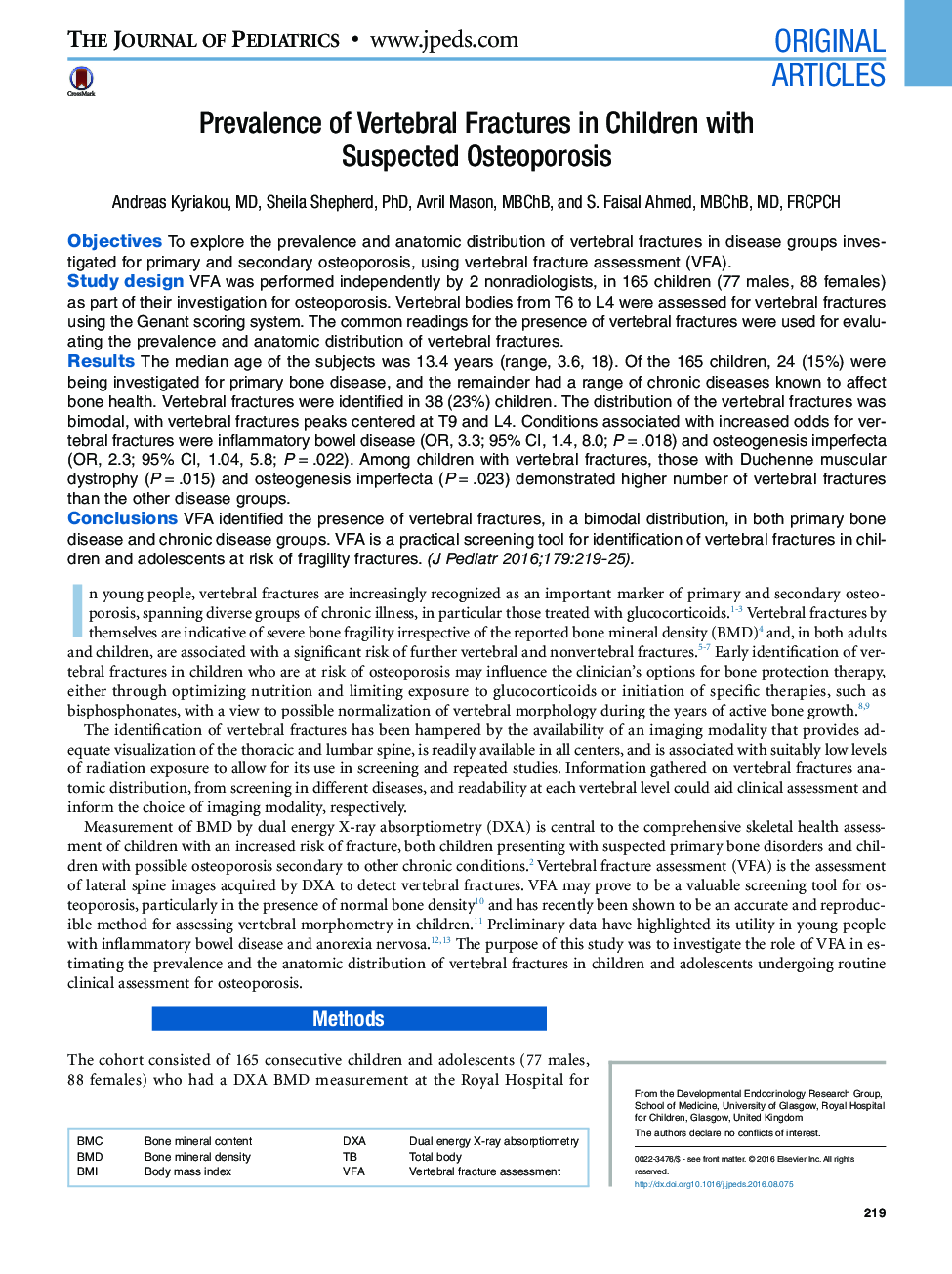| Article ID | Journal | Published Year | Pages | File Type |
|---|---|---|---|---|
| 5719539 | The Journal of Pediatrics | 2016 | 7 Pages |
ObjectivesTo explore the prevalence and anatomic distribution of vertebral fractures in disease groups investigated for primary and secondary osteoporosis, using vertebral fracture assessment (VFA).Study designVFA was performed independently by 2 nonradiologists, in 165 children (77 males, 88 females) as part of their investigation for osteoporosis. Vertebral bodies from T6 to L4 were assessed for vertebral fractures using the Genant scoring system. The common readings for the presence of vertebral fractures were used for evaluating the prevalence and anatomic distribution of vertebral fractures.ResultsThe median age of the subjects was 13.4 years (range, 3.6, 18). Of the 165 children, 24 (15%) were being investigated for primary bone disease, and the remainder had a range of chronic diseases known to affect bone health. Vertebral fractures were identified in 38 (23%) children. The distribution of the vertebral fractures was bimodal, with vertebral fractures peaks centered at T9 and L4. Conditions associated with increased odds for vertebral fractures were inflammatory bowel disease (OR, 3.3; 95% CI, 1.4, 8.0; Pâ=â.018) and osteogenesis imperfecta (OR, 2.3; 95% CI, 1.04, 5.8; Pâ=â.022). Among children with vertebral fractures, those with Duchenne muscular dystrophy (Pâ=â.015) and osteogenesis imperfecta (Pâ=â.023) demonstrated higher number of vertebral fractures than the other disease groups.ConclusionsVFA identified the presence of vertebral fractures, in a bimodal distribution, in both primary bone disease and chronic disease groups. VFA is a practical screening tool for identification of vertebral fractures in children and adolescents at risk of fragility fractures.
